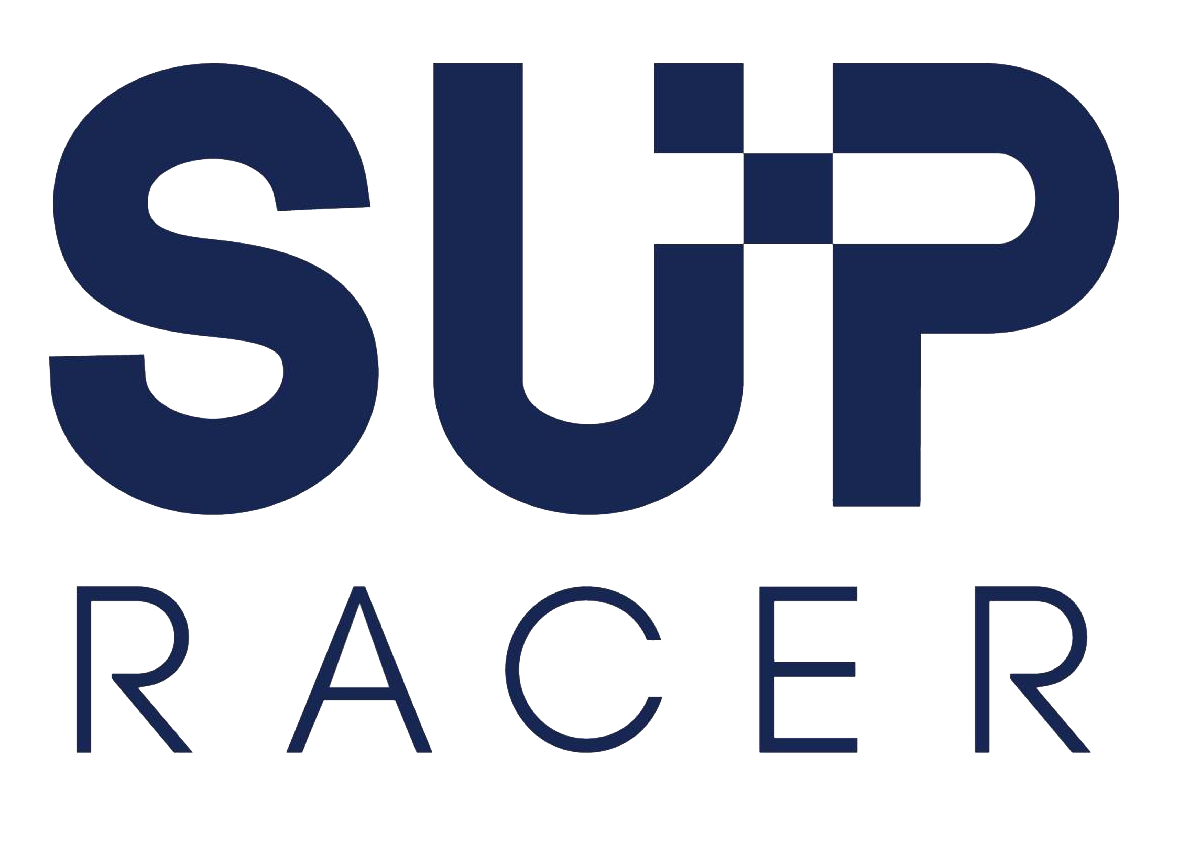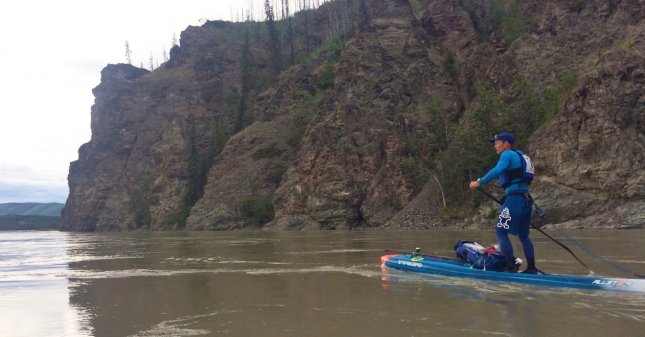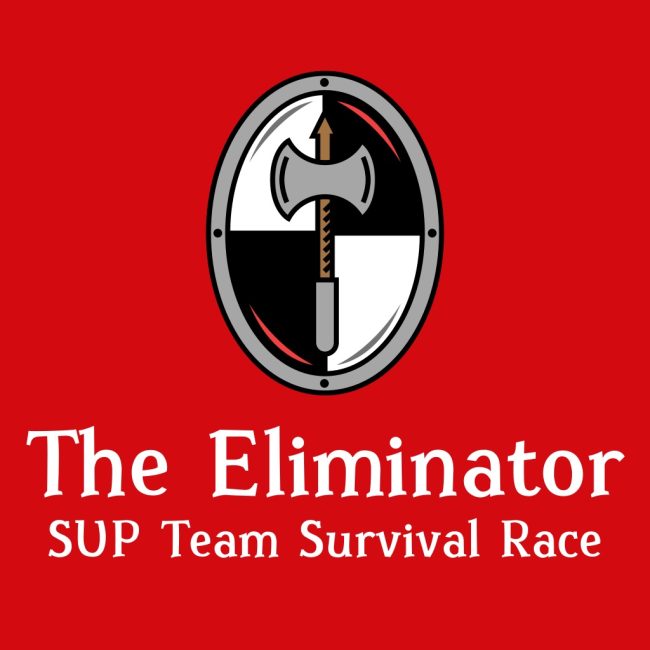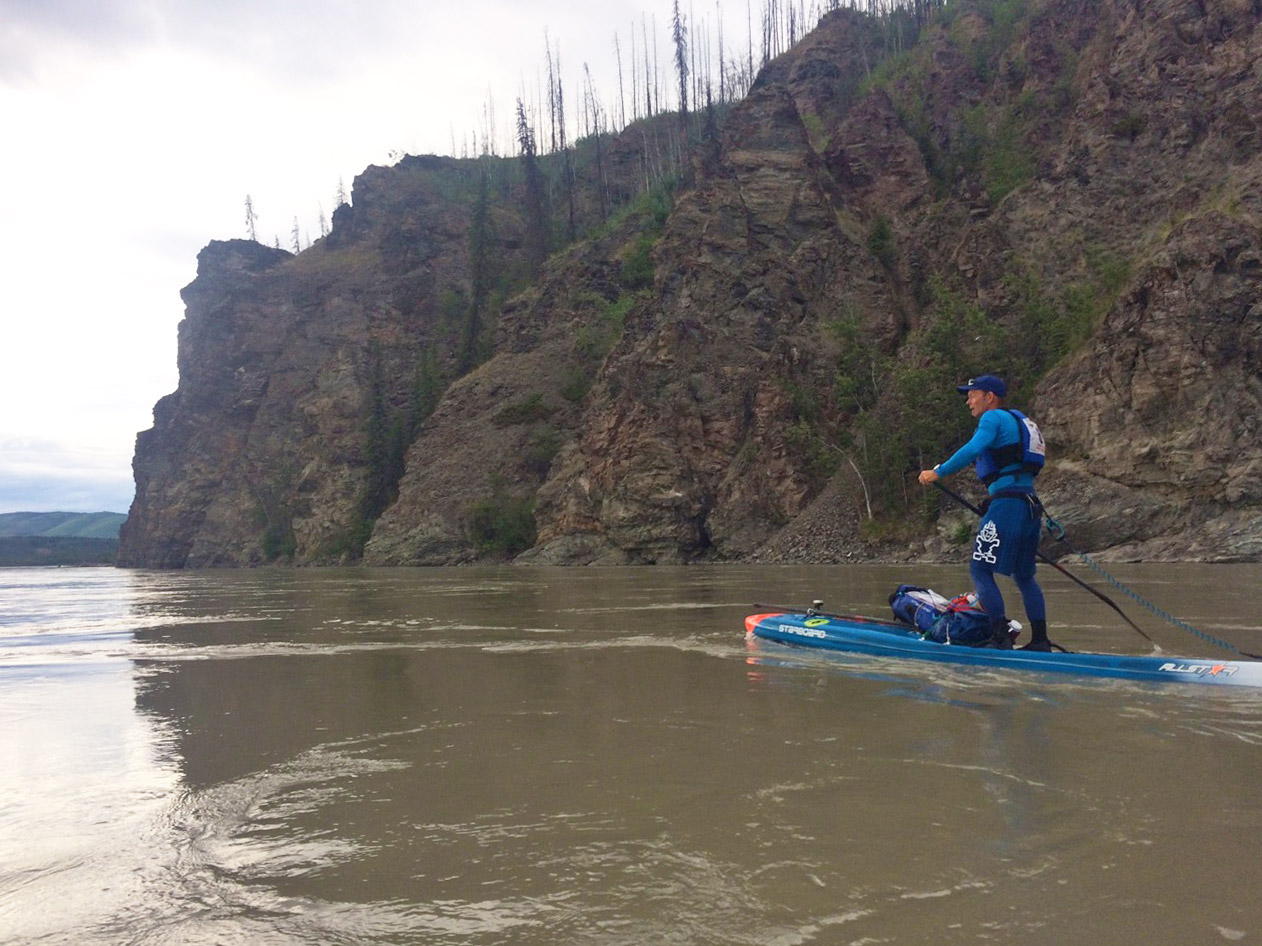
Bart de Zwart’s Yukon River Quest insights: ”You go places in your mind you didn’t know existed.”
JUNE 2019 UPDATE: This is an article we posted two years ago summarising Bart de Zwart’s experience in the 715km (444 mile) Yukon River Quest, an epic, ultra-endurance challenge through the Canadian wilderness.
We’re back in Canada this week for the 2019 edition of the YRQ, and we’ll be taking part in this almighty adventure alongside Bart and a hundred other bold paddlers. Read our 2019 Yukon River Quest preview for more, and follow the adventure on Instagram and Facebook from Wednesday to Saturday.
[device] [/device]“Many of the paddlers have gone to places within their minds that they didn’t even know existed.”
That’s Bart de Zwart describing what happens during the Yukon River Quest, a mammoth odyssey through the Canadian wilderness that covers 715km (444 miles) of remote waters.
Last week, Bart completed the 2017 Yukon River Quest in record time. Five other stand up paddlers – Jason Bennett, Peter Allen, Joanne-Hamilton Vale, Carmen Merkel and Emily Matthews – also reached the finish line of this almighty adventure.
With barely any sleep in three days, Bart was generous enough to sit down the day after the race and share his thoughts about this year’s Quest. This is his story…
Why do we do it?
Recently Chris from SUP Racer asked me: “Why do you do it?”
Why do I paddle these ultra endurance races and expeditions? What’s the motivation?
With races like the Yukon River Quest, easily one of the longest races and most demanding races in the world at 715km (444 miles), you really have to ask yourself this question: “Why?”
Signing up is the easy part. Sitting on your coach with your computer, one click and you’re in the race. But doing it is a very different proposition.
It’s hard to explain how physically intense this challenge becomes: the ache of burning muscles, the weariness of sleep deprivation, the stress of being too hot during the day and too cold at night, and the monotony of having to eat and drink virtually non-stop to keep your body fueled.
But that only summarises ‘what’ we do. ‘Why’ we do it is something else…
I believe we do it for many reasons: the sense of adventure, stepping into the unknown, and the mental struggle to do something extremely difficult and come out of it as a changed person.
I will admit there are many times during the race when you ask yourself why you are doing this at all, but on the other side is the immense satisfaction of accomplishment. And the deeper you go within your mind while you’re out there on the water, the higher on top you feel when you step back on to land at the finish.
I almost never made it to the start line
After competing in the 2016 Yukon River Quest (the first time stand up paddlers were allowed to join) this year I felt well prepared and organized. Or at least I did right up until 5 hours before I was supposed to fly to the Yukon: that’s when I found out my flight to the starting town of Whitehorse was canceled.
Not delayed by an hour or two but completely canceled. There was no flight.
This year I only planned to arrive one and a half days before the race began, and to drive would have been nearly impossible. We had a big problem. Luckily, after a nervous hour of searching for an alternative, I found the very last seat on the only other plane going to the Yukon Territory.
https://www.instagram.com/p/BV2ummMBUOR/
A rather unique race briefing
Since this race is paddled through remote wilderness, the Yukon River Quest has a very detailed race briefing/skippers meeting that lasts more than an hour.
At this meeting we get told about the comprehensive safety requirements, the check points, the hazards and so forth. This year we were also given an orange garbage bag.
Normally in this race, competitors are given a bag that we can hang up on the side of the river as a distress signal in case we’re in trouble ourselves. A simple but effective distress signal. But this year, we were instructed to hang up the bag as a marker in case we found a body; a paddler had gone missing on the Yukon River last week and was yet to be found.
We are also told in the skippers’ meeting that we must be prepared to camp out and wait for help for as long as two days if we are in trouble. Helicopters will only be sent in extreme life threatening situations. So before the race begins, competitors are given a pretty good idea of what they’re getting themselves into…
The race…
Race eve I had a good night’s sleep.
We came to the second mandatory gear check before we started at 12 noon on Wednesday. We have to carry a lot of safety gear with us as you can see from the photos. Organisers are also very thorough in checking we are ready–you certainly don’t just show up and race the Yukon, this event requires so much preparation.
Race day weather was perfect with only a little wind and enough cloud cover to keep temperatures down without being too cold. This year I once again raced with my 14′ by 24.5″ Starboard All Star, which is wide enough for stability but still very fast. Though of course all the mandatory safety gear weighs you down.
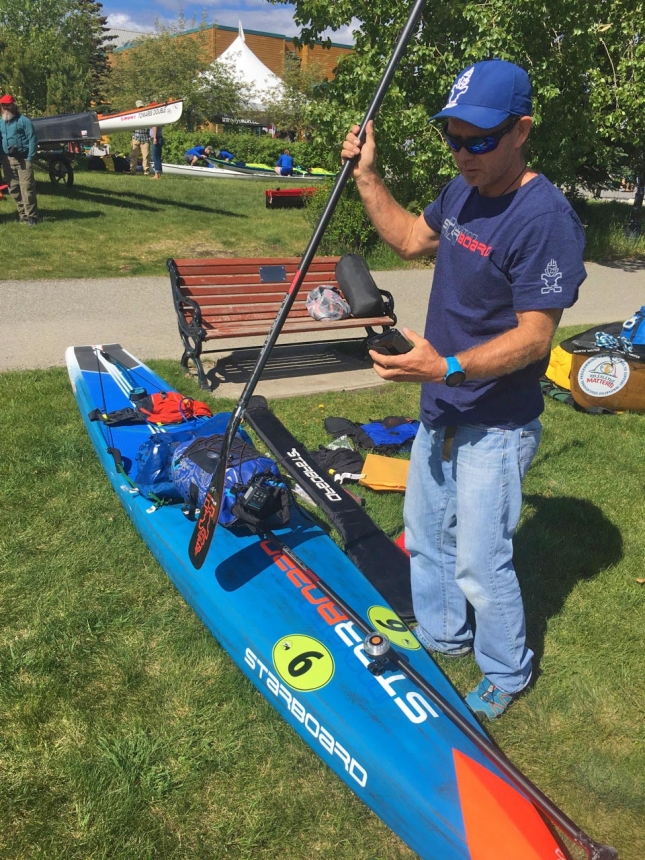
Bart de Zwart loaded up and ready for the 2017 Yukon River Quest (photo: Todd Phillips)
The start of the Yukon River Quest is a 400 meter dash to grab your board (or canoe or kayak) that’s sitting ready on the river bank loaded with gear. That gear includes tent, sleeping bag, two extra sets of dry clothes, food, GPS tracker, medical kit, and an extra paddle.
I had a great start. I jumped on my board and quickly got out into the current.
Even though it’s a very long race, I like to start quick and see who can stay with me. If there are others going at my pace then we might join up for part of the course. Otherwise I am happy to go solo.
With 715km (444 miles) and race times of anywhere between 50 and 80 hours, going off on your own means you really will be on your own for a long time. You will encounter the kayaks and canoe teams, but you could still be paddling an entire day all by yourself.
After three hours of paddling down the river we reached the dreaded Lake Lebarge. This long stretch of water can often be a nightmare in the Yukon River Quest because of headwind or sidewind–some paddlers will retire very early in the race because they miss the cut off time at the end of the dreaded lake. For us stand up paddlers, head wind is particularly miserable. We were all crossing our fingers for good conditions.
Much to our relief, the lake was calm on Wednesday.
I found myself paddling solo ahead of Jason Bennett and Peter Allen. I expected Peter to be close and he was indeed getting closer. He was drafting on one of the large voyageur canoes (which is perfectly legal in this race). Those canoes are fast but at some point you need to stop and eat, and those voyageurs never really slow down because they have between 6 and 12 paddlers in each one. Someone is always paddling.
After a couple of hours, Peter had to let go of his voyageur and started losing a little ground again.
The voyageur canoes are an interesting part of this race. You don’t see them at any paddle event outside this part of the world. The ‘Voyageurs’ were French-Canadians who worked along the Yukon and other remote rivers during the ‘fur trade years’ of the 18th and 19th centuries. They used these giant canoes – they look like bulging, oversized outrigger canoes – to transport the furs. There is some interesting history behind this race.
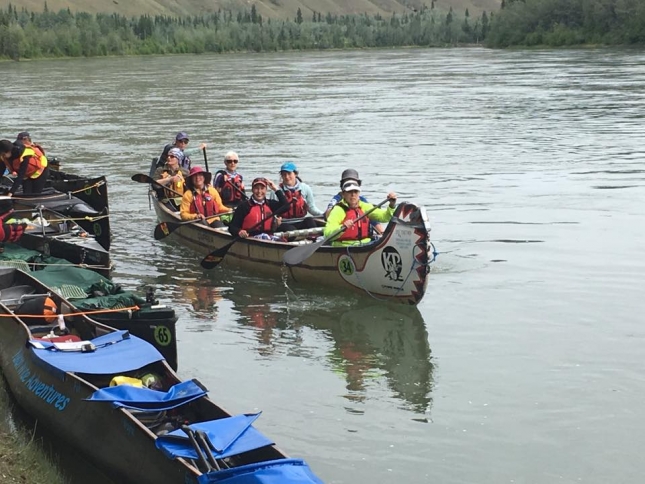
The iconic ‘Voyageur’ canoes (photo: Yukon River Quest on Facebook)
Knowing Jason from last year’s race, and knowing that he’s such a fighter, I knew he could be chasing me for the next 20 hours or more. So I decided that if he started getting close I would simply stop and wait so that we could work together and then fight it out later in the race. But while he was always within sight, the gap was slowly growing as we crossed the extremely long lake (almost 50 kilometres or about 30 miles).
By the time I hit the north end of Lake Lebarge at about the 8 hour mark of the race, I was on my own.
After the unknown of the lake, getting back into the Yukon River again is pure excitement. Because of the river flow, you go much faster on the river than the lake. It’s like driving a little Nissan 35 mph on a highway before suddenly upgrading to a Porsche. With a down-river current flow of about 4-5km/h, you are flying. At the same time you are always scanning the river looking for the fastest current possible, which helps avoid the monotony of such a long paddle.
The scenery is never boring either. There is an interesting mix of mountain slopes, dense forests and wildlife. At one point I saw a moose swimming across the river and getting out on the other side; Joanne Hamilton-Vale and Jason also saw grizzly bears along the way.
The 90 teams in the race spread out along the course very quickly (most of the teams are 2- and 4-person canoes/kayaks or the larger voyageur canoes; only about 25 of us paddled solo). Sometimes you will join up with a fellow paddler for a while. Many times you will be paddling all by yourself for hours on end.
During the first night on Wednesday I had a couple of hours where the weariness really kicked in. It was tough. You very nearly fall asleep, lose your focus and begin paddling with much less intensity. The trick is to get out of this phase as quickly as possible before you lose too much ground.
(Joanne had a very rough experience at this point: she took a pill to help with her nausea but it made her so drowsy she fell asleep on her board, fell in the river and had to take an unplanned two hour sleep break on the side of the river.)
After a couple of rough hours in the middle of the night, I paddled in to the first of the two mandatory rest stops at the town of Carmacks. Here we had to come ashore for at least seven hours: some paddlers would surely try and paddle start to finish without stopping if they were allowed, so these rest stops are an obvious (and very welcome) safety requirement.
I reached Carmacks about an hour faster than last year, just before 12 noon on Thursday. I’d been paddling 24 hours straight.
Jason was 45 minutes behind me and Peter another 90 minutes behind him. Carmen Merkel overtook Jo and arrived as the first female paddler at about 4pm Thursday. Emily Matthews was the last one through at about 9pm, which meant she’d paddled for an impressive 33 hours straight.
The 7 hour break at the rest stop is priceless for not just sleeping but refueling and checking gear.
Another important part of this race that most people don’t see is the support team. Having a good support team is extremely valuable. They can help you with refueling and gear checks, setting up your tent and everything else that you’re too tired to want to worry about. It means much less stress and much more sleeping time at the breaks.
My support guy this year was Todd Phillips. Todd was gold for us and I can’t thank him enough–he was also helping Jo and some of the other paddlers and deserves an award of his own.
https://www.instagram.com/p/BV8zSsTDY90/
I had about 5 hours sleep time during the 7 hour break at Carmacks. This does wonders for both the body and mind.
I left at 6:43pm on Thursday night, exactly 7 hours after I arrived and ready for another night and day of paddling: there was about 16-18 hours ahead of me before the next mandatory stop.
This time I had some company from a two-man canoe and also a voyageur that was going about the same speed as I was. We stayed together for about 6 hours, though I had to be quick every time I grabbed some food or stopped to look at the map because with someone in their team always paddling they never slowed down. After a couple of mini-breaks I was always sprinting to catch up. After the third time I realised I was working way too hard and should just let hem go.
The next 8 hours I was paddling all by myself. It was the graveyard shift.
Just like on the first night, there was a few hours where the body wants to sleep. REALLY wants to sleep. But you just have to overcome it with your mind and force yourself to keep going. Luckily there was a little bit of light all night long because we are so far north–after about 17 hours of paddling I reached the second mandatory break at Coffee Creek just before lunchtime on Friday.
Again you eat, you refuel, and you sleep as long as you can (a couple of hours this time).
When I woke up I found out that Jason had hit Coffee Creek only 45 minutes behind me.
Jason had completed the leg between Carmacks and Coffee Creek in almost the exact same time as me, so I knew I had to focus on the final stretch if I wanted to win. This race is about much more than winning of course – it’s a personal odyssey where just reaching the finish is the main goal – but we are all competitive and of course I wanted to retain my title from 2016.
I had struggled to hold a good average speed on the last stretch before Coffee Creek. My back was sore and my body just didn’t want to go faster. In races this long it always happens–the only thing you can do is slow down a little and take some food breaks. But you can’t slow down too much and you can’t really afford to stop for more than a couple of minutes at a time. You really do just have to paddle it out.
Reading the map is another very important part of this race. I almost lost my lead last year after making a wrong turn. The river is very wide in some parts, particularly towards the end. There are often multiple channels and islands to navigate around. It’s confusing enough at the best of times; when you’ve already been paddling for 40 or 50 hours it’s very easy to make a mistake.
Taking the wrong channel could mean going from enjoying a 5km/h current to paddling in dead water for the next 20 minutes. It’s not ideal.
Before this year’s race, I studied the routes taken by many paddlers during last year’s Quest. The GPS trackers are saved on the timing site, so you can see exactly which way each paddler goes around the various islands in the wider stretches of the river. This paid off as I now knew all the “shortcuts” and would have the fastest water possible water the whole way along the course.
Behind Jason and I, Peter was still in third as we entered the third day of racing. Joanne had caught up to and passed Carmen. A couple of the stand up paddlers were forced to retire mid-race, but there was still 6 of us from the 8 that started. There was another 79 canoe and kayak teams with about 20 of them eventually retiring.
After the three hour break at Coffee Creek, I hit the water just after quarter past two on Friday afternoon for the home stretch to the town of Dawson. I say “home stretch” because it’s “only” 12 to 13 hours between Coffee Creek and Dawson. I know that sounds ridiculous but it really does feel like you’re almost there at this point.
By then I knew that if I didn’t make any big mistakes I could not only win but even break last year’s record for the SUP division. So with renewed energy and focus, I paddled strong for the first 6 hours together with a solo kayaker. I was also taking very good care to read the map and the river so I could follow the quickest water.
I recognised the mistake I made last year, where I lost about 30 minutes, and made sure I avoided it this time.
As you slowly but surely approach the finish at Dawson, which was a boom town during the 19th-century Yukon gold rush, you begin to paddle faster again. Even though your body is so tired, the excitement of knowing you are almost there drives you. The dreamy thoughts of what food you’re going to eat at the finish line also really motivates you to finish strong.
By the time I finally crossed the line, just after 2am on Saturday morning (the fourth day; we started at lunchtime Wednesday), my race clock was 52 hours, 16 minutes, 6 seconds. That was a new record by about 2 and a half hours.
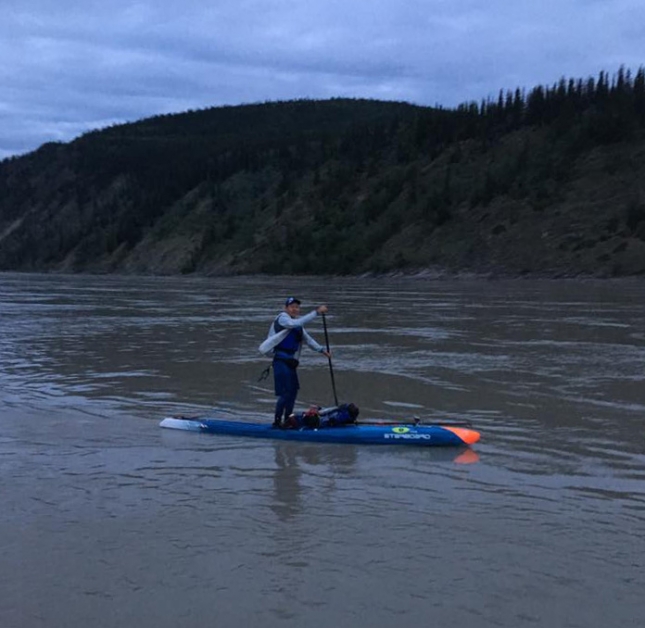
Bart de Zwart crossing the line (photo: Yukon River Quest on Facebook)
Add on the 10 hours of mandatory stops and it was just over 62 hours since we started. More than two and a half days.
Jason Bennett finished just 56 minutes after me to show how good of a distance paddler he is. After I opened up a gap of more than 40 minutes in the first half of the race, Jason was almost even with me the entire second half of the race. He only lost about 10 or 15 minutes in the final 400 kms.
Peter Allen was third in 57 hours. He crossed the line just after 7am to complete three full nights of paddling.
Joanne Hamilton-Vale was next over the line. She hit Dawson just before 9:30am on Saturday morning to record a time of 59 hours, 28 minutes. It’s a new record for the women’s SUP division.
Jo had famously left her wedding ring with the organisers after retiring mid-race last year, telling them not to return it until she finished the race. She made good on her promise and was reunited with her precious piece of jewelry.
Carmen Merkel finished just after lunchtime on Saturday. Almost exactly three days since we departed Whitehorse. All of the stand up paddlers that had finished plus our support crew waited at the finish to cheer Carmen across the line.
The final paddler over the line was a very determined Emily Matthews. She finished at 7:45pm on Saturday night. Almost three and a half days.
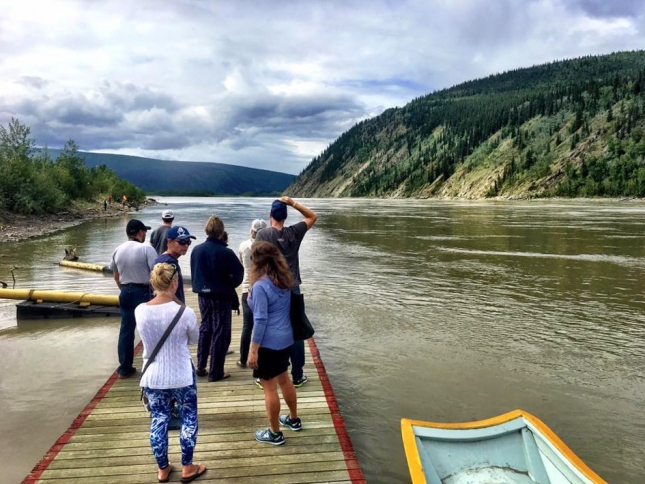
The early stand up paddle finishers and support crew waiting at the finish line to cheer home Carmen Merkel
The emotion
Sitting at the finish line and watching other paddlers cross the line was an interesting experience. It really gave me time to reflect on this race and see what it means to all the other competitors as well.
Many of the finishers, the solo paddlers in particular, were full of emotions after they crossed the line. It’s hard to describe unless you see it, and it’s hard to understand unless you are part of it.
During the Yukon River Quest, many paddlers go to places in their mind that they didn’t even know existed. They have dug deeper than they ever have before. They have come out a changed person. They have probably come out of it a better person as well.
This final part of the race is nice to watch, especially when you have just gone through it yourself. I could relate to all the emotions I could see the other finishers experiencing.
The Yukon River Quest is much more than a race. This is an odyssey. An adventure. It is a huge undertaking both physically and mentally, and everyone that reaches the finish line has overcome an immense challenge.
The body and mind really are capable of so much more than we realise…
Thank you to the organisers for hosting this amazing race, and to the other paddlers for making it so special. Thanks to Todd for being a gold-class support guy, and thanks to my sponsors – Starboard in particular, along with SUPskin, Black Project, Patagonia, Maui Jim, Suunto, and Velocitek – for making these adventures possible.
But most of all thanks to my wife Dagmar for being my biggest supporter of all.
You can relive SUP Racer’s rolling coverage of the 2017 Yukon River Quest for more coverage of this incredible event.
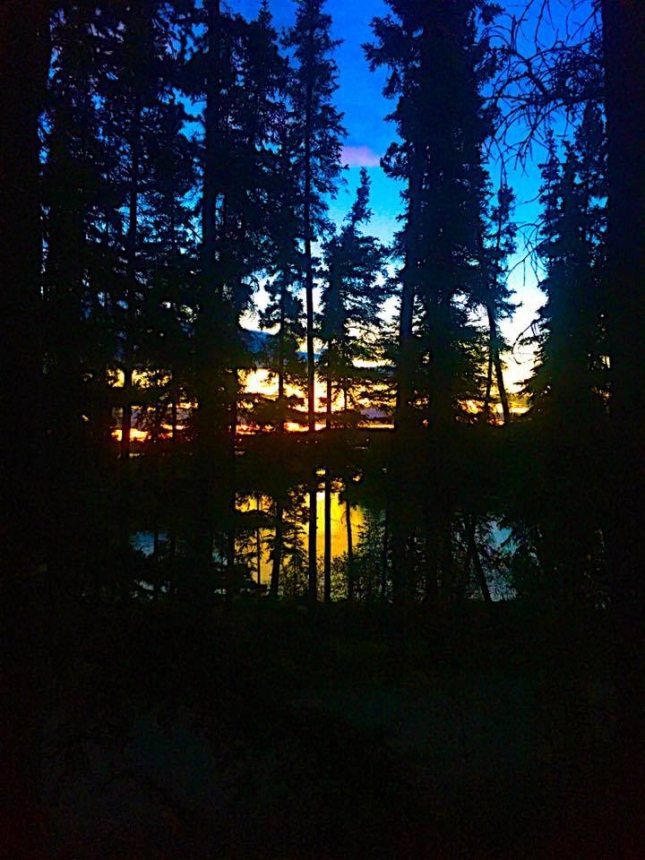
1:30am in the Yukon… (photo: Todd Phillips)
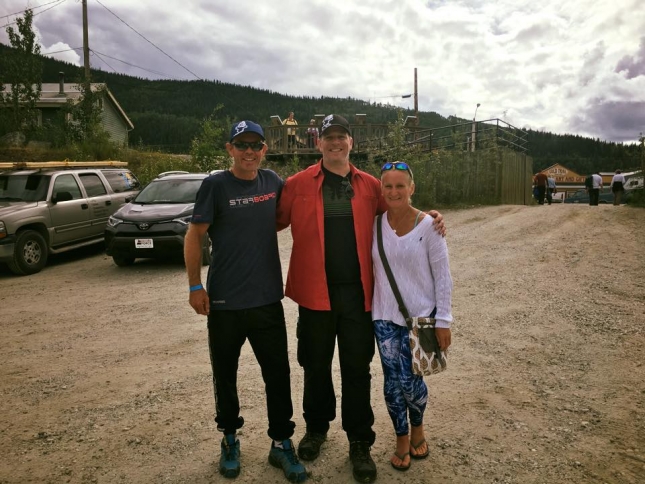
Bart de Zwart and Joanne Hamilton-Vale with their ‘gold’ support man, Todd Phillips (left)
Below: the awards that each paddler received for completing this incredible odyssey
https://www.instagram.com/p/BWDhjUMhLBs/
